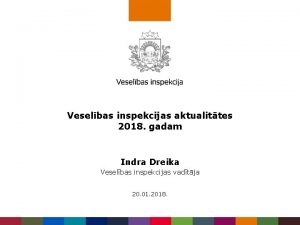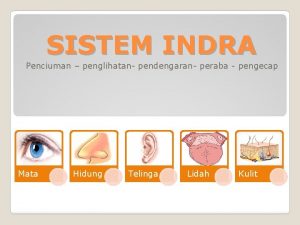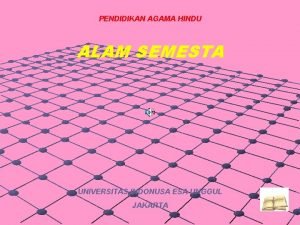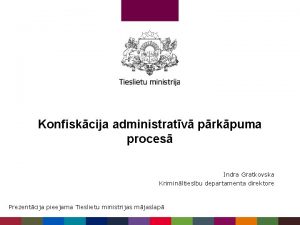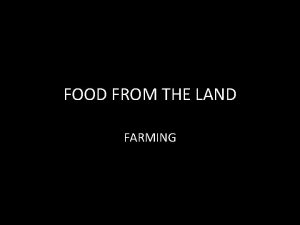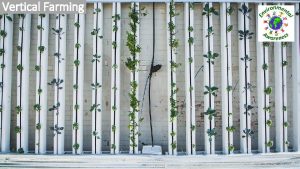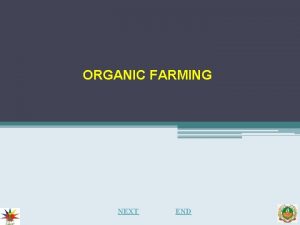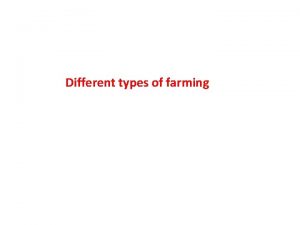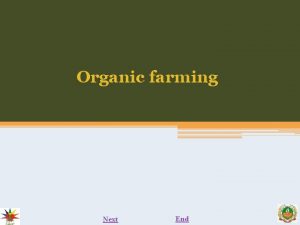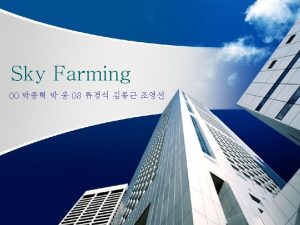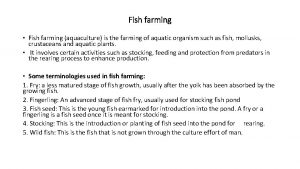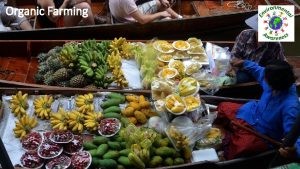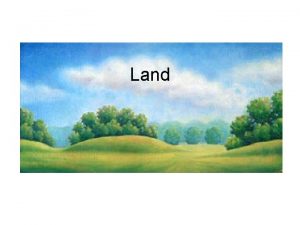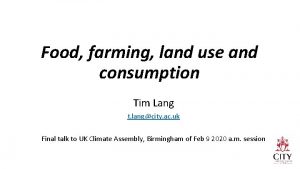Food farming land use Indra Thillainathan Committee on













- Slides: 13

Food, farming & land use Indra Thillainathan Committee on Climate Change Climate Assembly UK, 9 th February 2020

Around 71% of UK land area is used for farming Woodland 13% Crops 25% ~ 55% for animal feed Other 9% Urban 8% Contribution to the economy (2018): • • Agriculture £ 9. 5 bn (less than 1% of GDP) Forestry output £ 0. 7 bn • • Around 217, 000 farm holdings in the UK 76% farm area owned by 20% of holdings • Agriculture employed 426, 000 people (1. 5% of the UK labour force) Forestry employed 16, 000 people in 2017. Grassland • 46%

Trade (2018) 100 Self-sufficiency 90 90% 80 80% 70 70% 60 % 100% 60% 50 40 All food 30 20 10 Self-sufficiency by product type 50% 40% 30% Indigenous type food 1990 1991 1992 1993 1994 1995 1996 1997 1998 1999 2000 2001 2002 2003 2004 2005 2006 2007 2008 2009 2010 2011 2012 2013 2014 2015 2016 2017 2018 0 20% 10% 0% Wheat Fresh vegetables Potatoes Fresh fruit Beef & veal Pig meat • Imports account for 47% of the food we consume • Exports account for 18% of the food we produce • Exported food, feed and drink makes up 1. 9% of global agricultural trade Source: Defra (2019) Agriculture in the UK Poultry

The farming sector accounts for ~9% (45. 6 Mt. CO 2 e) of UK greenhouse gas (GHG) emissions 240 Annual emissions (Mt. CO 2 e) Power 200 Industry 160 Surface transport 120 Buildings Agriculture 80 Waste 40 F-gases Aviation & Shipping Source: BEIS (2019) Final UK greenhouse gas emissions national statistics 1990 -2017. 2016 2014 2012 2010 2008 2006 2004 2002 2000 1998 1996 1994 1992 -40 1990 0 Land use & forestry LULUCF

The farming sector accounts for ~9% (45. 6 Mt. CO 2 e) of UK greenhouse gas (GHG) emissions 240 Annual emissions (Mt. CO 2 e) Power 200 Industry 160 Surface transport 120 Buildings Agriculture 80 Waste 40 F-gases Source: BEIS (2019) Final UK greenhouse gas emissions national statistics 1990 -2017. 2016 2014 2012 2010 2008 2006 2004 2002 2000 1998 1996 1994 1992 -40 1990 0 Aviation & Shipping Land use & LULUCF forestry

GHG emissions in UK farming come from four main sources 1. Digestion process 47% • Feed type • Cattle type 2. Soils (crop and grassland) 24% • Chemical fertiliser • Organic fertiliser • Crop residues • Grazing returns 3. Storing/managing animal waste 15% • Slurry • Farm yard manure 4. Energy use by machinery 10% • Tractors • Heating, cooling & drying systems

By type of greenhouse gas, methane and nitrous oxide dominate emissions in agriculture Carbon dioxide 12% Nitrous oxide 31% Methane 56% Due to complex biological & chemical processes associated with crop and livestock production it is not possible to reduce these emissions to zero Source: BEIS (2019) Final UK greenhouse gas emissions national statistics 1990 -2017.

But there a range of measures that farmers can adopt to reduce emissions 1. Digestion process & livestock • Animal feed (e. g. probiotics) • Improve animal health 2. Soils • Efficient use of fertiliser • Avoid soil compaction 3. Managing /storing animal waste • Adding acid to slurry stores 4. Energy use • Renewable energy (e. g. solar panels) • Electric vehicles / small robots These measure also deliver wider benefits beyond reducing emissions 1. Environmental • Improve water quality • Improve air quality • Improve animal welfare • Soil quality • Biodiversity 2. Economic • Crop and livestock yields

Eating less beef, lamb and dairy products can also contribute to reductions in GHG emissions 120 Animal protein sources generally have larger GHG footprints than plant-based sources 100 80 60 40 Source: Poore, J. & Nemecek, T. (2018) Nuts Peas Other Pulses Groundnuts Tofu Fish (farmed) Eggs Poultry Meat Pig Meat Cheese Crustaceans -20 Beef (dairy herd) 0 Lamb & Mutton 20 Beef (beef herd) kg. CO₂e per 100 g protein 140

GHG emissions intensity of beef around the world 400 350 300 Dummy Maximum 250 200 Beef herd 150 100 World Mexico USA Uruguay Indonesia Canada Brazil Australia Germany Netherlands Norway Romania Switzerland Sweden Ireland France 0 Denmark 50 United Kingdom kg. CO 2 e per kg retail weight 450 Source: Poore, J. & Nemecek, T. (2018) Wide variation reflects the range of different production systems, land conditions and climates across the world.

Annual net emissions (Mt. CO 2 e) The way we manage and change the use of land can release emissions and remove emissions (sequestration) from the atmosphere 30 12 Mt. CO 2 e 20 10 0 -10 -20 -30 Forestry Grassland Peatland Cropland Settlements net emissions The UK land use sector is a net emitter of GHG emissions ~12 Mt. CO 2 e

Measures to reduce emissions and increase removals Planting trees… …and on farm Energy crops Restoring peat • This requires releasing some land out of agricultural production. • This can be achieved through a change in diets (less beef, lamb and dairy), improving crop productivity and increasing livestocking densities on grassland. These measures also deliver wider benefits beyond the reduction of emissions: - Air quality - Animal welfare - Recreation - Water quality - Biodiversity - Health

Topics and speakers 1. The role of farming in delivering net zero • Ceris Jones (National Farmers’ Union) • Sue Pritchard (Royal Society of Arts) 2. The role of land in delivering net zero • Jo House (University of Bristol) 3. The role of consumers and behaviour change in delivering net zero • Rosemary Green (London School of Hygiene & Tropical Medicine) • Tim Lang (City University)




